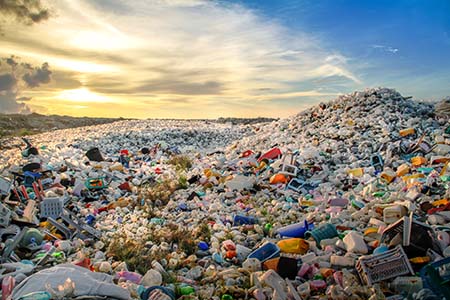The current linear consumption model of raw material extraction, production, use, and disposal—“Take, Make, Waste”—has dominated the global economy for hundreds of years.
 Today, we clearly see that this linear model has led to serious and unchecked global consequences.
Today, we clearly see that this linear model has led to serious and unchecked global consequences.
The plastics sector has grown more than 600% by volume over the past 30 years with 10 million tons entering the ocean annually,1 and it is estimated that plastic weight in the ocean will be significantly greater than the fish weight by 2050.
Population growth and the accompanying growth in the housing construction sector leads to extraction of construction minerals exceeding 10 billion metric tons annually, along with the use of materials such as composite wood products that do not degrade.
This results in more than 38 million tons of waste landfilled annually in the U.S. alone.2, 3
These statistics will be further exacerbated by billions of new developing world consumers entering the global economy.
Spiraling resource consumption is leading to shortages and supply chain disruptions, with a number of elements entering the endangered regime, reducing their extraction viability.4, 5
Notes
1 Geyer, R., Jambeck, J.R., Law, K.L, Production, use, and fate of all plastics ever made. Sci. Adv., 2017. 3(7).
2 U.S. EPA. Advancing Sustainable Materials Management: 2015 Fact Sheet,. 2018.
3 Fischer-Kowalski, M., et al., Methodology and Indicators of Economy-wide Material Flow Accounting. 2011. 15(6): p. 855-876.
4 American Chemical Society. Green Chemistry: Endangered Elements. 2019 [Last accessed on January 30, 2019].
5 Chattopadhyay, D., Endangered Elements of the Periodic Table. Resonance, 2017: p. 79-87.
